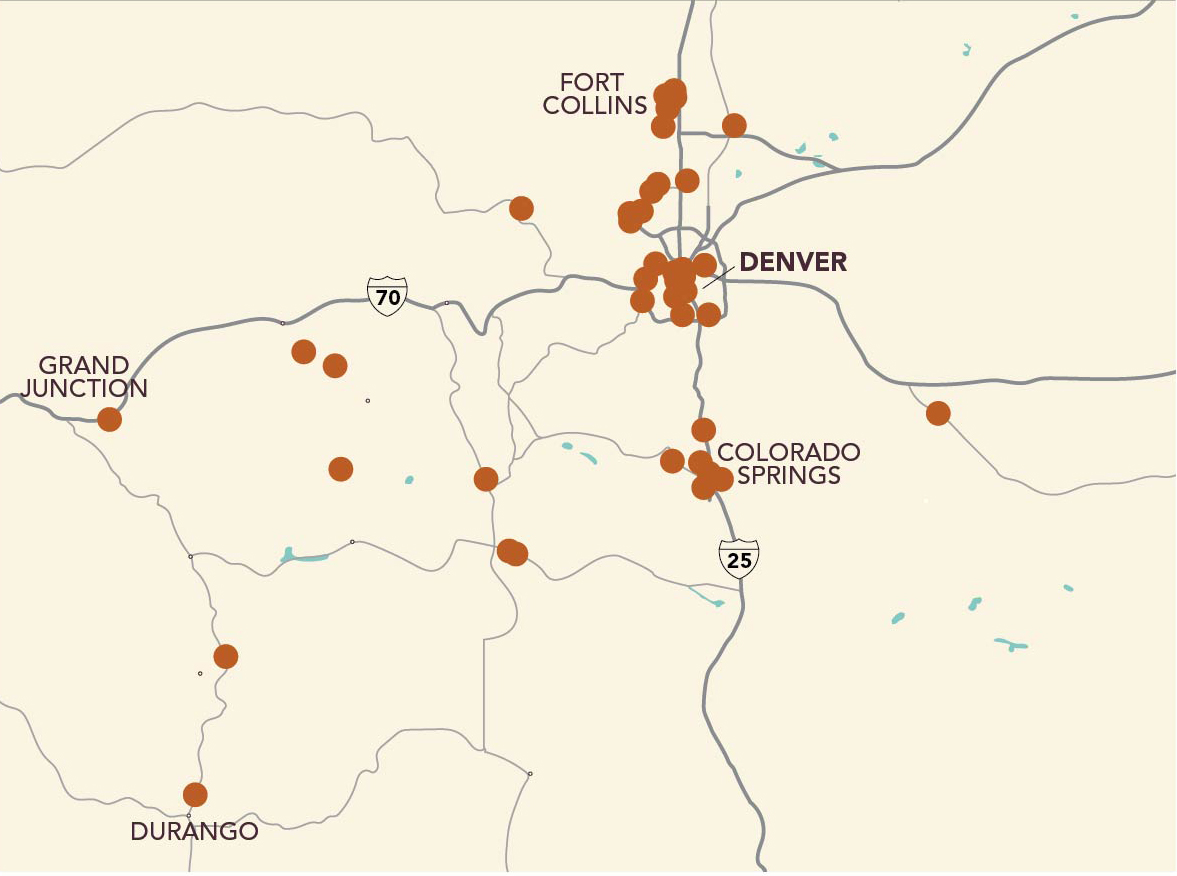The Local newsletter is your free, daily guide to life in Colorado. For locals, by locals.
Blazing A Booze Trail
Colorado is already a destination for beer drinkers and is known for its world-class hiking, biking, and skiing trails. So when Dawn Nudell Richardson, the owner of Denver’s Rising Sun Distillery, read about the enormous economic impact the Kentucky Bourbon Trail has had on the Bluegrass State’s coffers, she wondered, Why don’t we have anything like that? She began working with the Colorado Tourism Office and the Colorado Distillers Guild (CDG) a little more than a year ago, and this month, the resulting Colorado Spirits Trail is debuting with more than 50 CDG distilleries. Visitors earn stamps on their maps (download your free copy after February 24 at coloradospiritstrail.com) for buying something, from swag to cocktails, at each spot. Ten stamps earn the bearer an “I bagged the Colorado Spirits Trail” T-shirt, and the first 24 people who hit every distillery will win one signed bottle of hooch from each participating maker. Of course, it wouldn’t be a Colorado booze cruise without outdoor recreation, so the map also calls out nondrinking activities—fly-fishing, B-cycle touring, hiking—visitors can enjoy near each distillery. “We want people to feel the spirit of Colorado,” Nudell Richardson says, “which is going out to do something fun—and then hanging out with a cocktail.”
Equal Paying Field
Taxes may be far less fun than après, well, anything—but they have a major impact on what ends up in your cocktail. Until December 2017, small Colorado distilleries paid a whopping $13.50 per gallon in federal excise tax (FET)—the same rate as brands producing much more product. But legislation that brings the rate for craft distillers down to a more equitable $2.70 per gallon (for the first 100,000 proof gallons), passed as part of the 2017 tax reform bill. “Reducing the FET,” says Margie A. S. Lehrman, executive director of the American Craft Spirits Association), “means those savings will go back into that distillery, whether that will be adding another staff person, purchasing a new still, or expanding production capacity and tourism facilities.”









